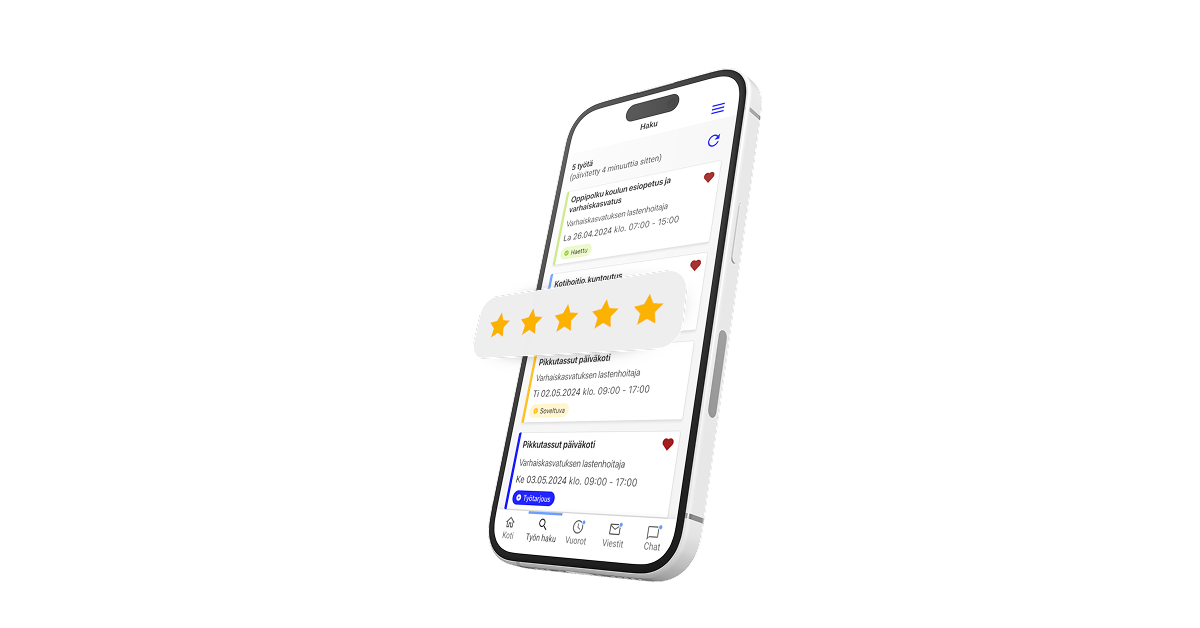- Blog
#Data&AI #Development #Digital service design #Learning #Zure
EU AI Act timer is ticking, are you prepared?
- 17/09/2024
Reading time 9 minutes

Do you have bad app store ratings and don’t know what to do with them?
Well, we raised the Google play and Apple app store review ratings from 2/5 to 4.3/5 for one of our clients. There is a simple recipe on how to achieve this and I will share the steps we took in this post.
When looking at similar business applications in the application stores the app currently has the highest rating compared to other applications that fall in the same category in Finland.
If you don’t have the energy to read forward, then the short answer is that Ask your users, but if you would like to know the details, then read on my friend.
One of the most important things in ensuring that your application meets the user needs of your targeted audience is to systematically gather feedback and act according to the feedback.
The blunt, but honest answer to this is that No, you don’t.
Yes, you might know the market, yes you might understand best business practices. But these won’t tell you that what your specific users think and like and dislike. What are the most common problems your uses have with your application and what are the best and most liked features.
That’s correct and smart. You don’t need to build everything your users want, but you need to have a good understanding of what brings them value, what is working and what is not working. Gathering feedback and acting on it ensures that your backlog is organized in the right order, and you are focusing on the things.
In our project we get constant feedback on the application and what our users like and don’t like about it.
There are things we don’t consider to be added in our backlog when we see that the feedback falls into the minority of needs or if we know that down the line in the future, we will be making changes anyway to the discussed feature.
Asking feedback is one thing, but seeing people use your application is even better.
As a basic principle, Five users are more than enough to get decent qualitative user feedback for any solution. One of the best ways to do this is to arrange a testing day where you gather direct feedback from your users and observe them using your application.
Recently our client arranged a testing session at their office where volunteer users could come, show how they use the application and provide feedback. We got some good insight on what we could improve and confirmation on our assumptions of what is working well for our users.
This one is simple, but worth to note. Don’t try to come up with something new and innovative on how your application works. There are extremely good and well tested UX patterns for mobile user experience already existing. Stick with them instead of trying to invent something new just for the novelty of it.
We have kept things as basic as possible. Usability and clarity are the key in a well-functioning business application.
All the above ensures that your application corresponds to the needs and likes of your users, but that really does not help if your users don’t give ratings.
One quite common reason for poor ratings is that people tend to write ratings when they are irritated. A satisfied user does not have the need to take time to provide rating, but a dissatisfied user can more easily vent their frustration and write a bad review. Even if your application is quite liked and answers the many user’s needs, it might still have bad ratings since the most ratings it gets are from the dissatisfied users.
The very simple way of fixing this is to actually regularly ask users to rate your application. After a short period of time a user has used the application, prompt them for a rating that goes directly to the app stores.
It is an extremely small effort for the user to provide the rating, but not really a meaningful extra step to take. Asking directly when they are using the application considerably raises the chance that they provide the needed stars to boost your ratings.
Naturally if your app is bad, this will just boost the bad ratings, but if the application is developed, following the recommendations given in this post, then there is a bigger chance that your ratings will be above average.
Our application was at the end of its lifecycle sometime back and we had to renew it. This was the perfect time to re-think the overall user experience and ensure that going forward our ratings are good. Old users were on-boarded to the new application and after an agreed period they started to get systematic prompts to rate the app. In just a short period of time we got over 1000 ratings in the stores and hit an average rating above 4 out of 5 stars, with a 5-star rating given most of the time.


You can read more about the project in question from here.

Our newsletters contain stuff our crew is interested in: the articles we read, Azure news, Zure job opportunities, and so forth.
Please let us know what kind of content you are most interested about. Thank you!